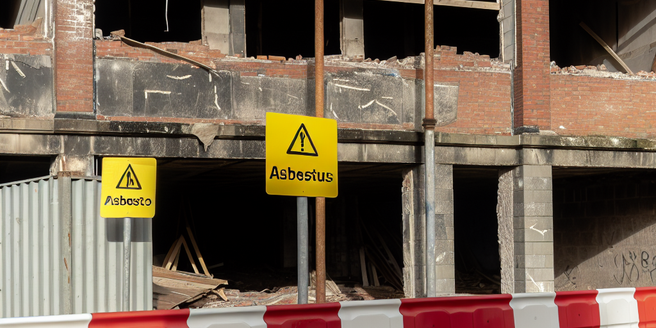
Understanding the Dangers of Asbestos Exposure
Asbestos, a naturally occurring mineral, is known for its heat resistance, strength, and insulation properties. However, its fine particles can be inhaled easily, leading to serious health conditions such as mesothelioma, lung cancer, and asbestosis over time. Chronic lung diseases caused by asbestos exposure are often fatal as they progress. Regrettably, the risks associated with asbestos exposure were not publicly known until the late 20th century. Countless individuals had already been exposed by that point. Today, it is widely agreed that there is no safe level of asbestos exposure.
Asbestos Use: A Historical Overview
Asbestos use dates back to prehistoric times, but it gained widespread popularity during the Industrial Revolution. In the 19th and early 20th centuries, its properties made it seem like a miracle substance for manufacturing and construction. It was used in a variety of products, from insulation and roofing to automobile brakes and textile products. The health hazards related to asbestos were unveiled in the 1960s when studies revealed that prolonged exposure resulted in serious lung diseases. This led to a slow and gradual phasing out of asbestos, but it remains a significant hazard in older buildings around the world.
The Role of Corporations in Asbestos Exposure
Corporations played a central role in the asbestos tragedy. For much of the 20th century, the asbestos industry thrived, and the harmful effects of the substance were largely downplayed or even concealed. To maximize profits, many companies disregarded the wellbeing of their workers and the public by failing to implement safety measures. Despite having access to information about the potential harmfulness of asbestos, several corporations continued to subject their employees and consumers to high-risk situations.
Investigating the Asbestos Industry: Who Knew What?
The key question in any asbestos lawsuit is who knew what and when. It became an issue of ethical and legal responsibility – one that has been the subject of numerous investigations and lawsuits. Evidence indicates that many asbestos manufacturers knew of the serious health risks associated with the substance as early as the 1930s. However, they neglected to notify their workers, the public, or the authorities. These revelations have led to considerable legal action over the decades.
Asbestos-Related Diseases: A Health Crisis
Asbestos-related diseases represent a public health crisis. The three most prevalent conditions are asbestosis (a chronic lung condition), lung cancer, and mesothelioma (a rare and aggressive form of cancer). These diseases often materialize years after exposure, making it challenging to diagnose and treat them in time. Despite medical advancements, there is still no known cure for most asbestos-related diseases, adding to the urgency of raising awareness about the dangers of asbestos and battling for justice for victims.
Legal Remedies for Asbestos Victims: Class Action Lawsuits
For the victims and their families, class action lawsuits have become a common legal remedy to receive compensation for the damages caused by asbestos exposure. These lawsuits allow multiple plaintiffs to join together and collectively sue one defendant (or a group of defendants), often a corporation, for the harm caused by their products or policies. The advantage of class action lawsuits lies in their efficiency – they prevent repetitious trials with identical evidence and allow for a comprehensive adjudication.
Terrains of Asbestos Class Action: Landmark Cases
Several asbestos class action lawsuits have changed the landscape of asbestos litigation in the United States, setting precedent for future cases. One such case is In re Asbestos School Litigation, which established school district liability for asbestos removal. Another is Borel v. Fibreboard, which ruled manufacturers liable for harm caused by asbestos-containing products. These landmark cases highlighted the negligence of industries and their role in causing harm to workers and consumers.
Steps to Filing an Asbestos Class Action Lawsuit
Filing an asbestos class action lawsuit involves several steps. First, the plaintiffs must establish that they have a legitimate claim and that their situation is representative of a wider group affected in a similar manner. An attorney then prepares a complaint document outlining the plaintiffs’ assertion and desired compensation. Upon receiving court approval, other potential claimants are notified and given the choice to join the action. Once the case proceeds, it is up to the court to provide a verdict or craft a settlement.
The Role of Lawyers in Asbestos Class Action
Lawyers play a pivotal role in asbestos class actions. They represent the victims’ interests, ensuring they receive the compensation they deserve. These suits require extensive knowledge of personal injury laws, product liability, and complex medical issues, highlighting the importance of skilled representation. Lawyers not only provide legal expertise but also advocate for their clients, assisting them in navigating the complex legal labyrinth that accompanies asbestos claims.
Future Prospects: Preventing Asbestos Exposure and Holding Companies Accountable
As we move towards the future, the lessons from the asbestos epidemic must guide policies. There is a need to continue efforts to prevent asbestos exposure, improve medical options for victims, and hold accountable the corporations that disregarded public safety. Class action lawsuits have proven to be effective in these endeavors. The role of legislation, oversight, and continuous advocacy cannot be overstated. The long battle against asbestos-related harms serves as a stark reminder of the importance of corporate accountability, marking a clear trajectory for the future.
